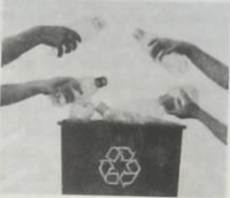题目内容
How many things can you see in the night sky? A lot! a clear evening you might see the Moon and some planets. And thousands of sparkling stars , too.
You can see even with a telescope. You might see stars where you only saw dark space before. You might see that many stars look larger than others. You might see that some stars look white are really red or blue.
But scientists believe there are some things in the sky that we . We can’t see them with the biggest telescope in the world, even when it is the clearest night of the year. That’s they’re invisible. They’re the mysterious dead stars called black holes. You might find hard to imagine that stars die. After all, our Sun is a star. Year after year we see it up in the sky, burning brightly, giving us heat and light. The Sun certainly doesn’t seem getting old or weak. But stars do burn out and die after billions of years. As a star’s gases burn, they give off light and heat. But when the gas runs , the star stops burning and begins to die.
So the next time you stare up at the night sky, remember: there’s more in the sky than that meets the eye. amazing space it is!
You can see even with a telescope. You might see stars where you only saw dark space before. You might see that many stars look larger than others. You might see that some stars look white are really red or blue.
But scientists believe there are some things in the sky that we . We can’t see them with the biggest telescope in the world, even when it is the clearest night of the year. That’s they’re invisible. They’re the mysterious dead stars called black holes. You might find hard to imagine that stars die. After all, our Sun is a star. Year after year we see it up in the sky, burning brightly, giving us heat and light. The Sun certainly doesn’t seem getting old or weak. But stars do burn out and die after billions of years. As a star’s gases burn, they give off light and heat. But when the gas runs , the star stops burning and begins to die.
So the next time you stare up at the night sky, remember: there’s more in the sky than that meets the eye. amazing space it is!
| 小题1: |
|
| 小题2: |
|
| 小题3: |
|
| 小题4: |
|
| 小题5: |
|
| 小题6: |
|
| 小题7: |
|
| 小题8: |
|
| 小题9: |
|
| 小题10: |
|
小题1:A
小题2:C
小题3:D
小题4:B
小题5:A
小题6:C
小题7:A
小题8:A
小题9:D
小题10:B
试题分析:这篇短文介绍宇宙当中的行星。其中星星不只有我们看到的白色,还有红色和蓝色,这些都是死去的星星。星星考气体燃烧发光,当气体用尽,星星便会死去。而太阳被证实不会死去。
小题1:考查介词及语境的理解。句意:在一个晴天的夜晚你可以看到月亮和一些行星。A. On“在……上面”;B. In“在……里面”;C. At“在(表示时间地点等词的前面)”D. For“为,给”。 表示在具体某一天及具体某一天的上午、下午和晚上。 on,故选A。
小题2:考查动词及语境的理解。句意:还能看到成千上万的闪烁的星星。See与star是被动关系,因此要用被动语态。时态是一般现在时,故选C。
小题3:考查形容词及语境的理解。句意:用望远镜可以看到更多的星星。A. much“许多,修饰不可数名词”;B. many“许多的,修饰可数名词复数”;C. most“much和many的最高级”;D. more“much和many的比较级”。联系上下文,故选D。
小题4:考查连接词及语境的理解。句意:你还能看到一些看着是白色的实则是红色和蓝色的星星。这是一个定语从句,先行词是stars,连接词要用which。故选B。
小题5:考查动词及语境的理解。句意:但是科学家说天空上一定有一些我们从没看到过的事物。之前没看过,现在没看过,所以排除B、D,选项C时态搭配不对。故选A。
小题6:考查连词及语境的理解。句意:那就是为什么他们不可见了。A. when“当……时候”;B. how“如何”;C. because“因为”;D. so“所以”。结合语境,故选C。
小题7:考查代词及语境的理解。句意:你会发现很难想象星星是死的。It指代上文提到的dead stars,故选A。
小题8:考查动词及语境的理解。句意:太阳被确定似乎不会衰衰竭。Seem to do sth,故选A。
小题9:考查副词及语境的理解。句意:当气体用尽,星星停止燃烧便慢慢死去。A. around“周围”;B. off“走开”;C. away“离开,离去”;D. out“出去”。Run out“用完,耗尽”。故选D。
小题10:考查特殊疑问词及语境的理解。句意:多么惊人的宇宙啊!感叹句的表达方法:what a/an +单数可数名词+形容词+(主语+谓语)!what +形容词+可数名词复数+(主语+谓语) !What +形容词+不可数名词+(主语+谓语)! How +形容词+(主语+谓语)!故选B。

练习册系列答案
相关题目


